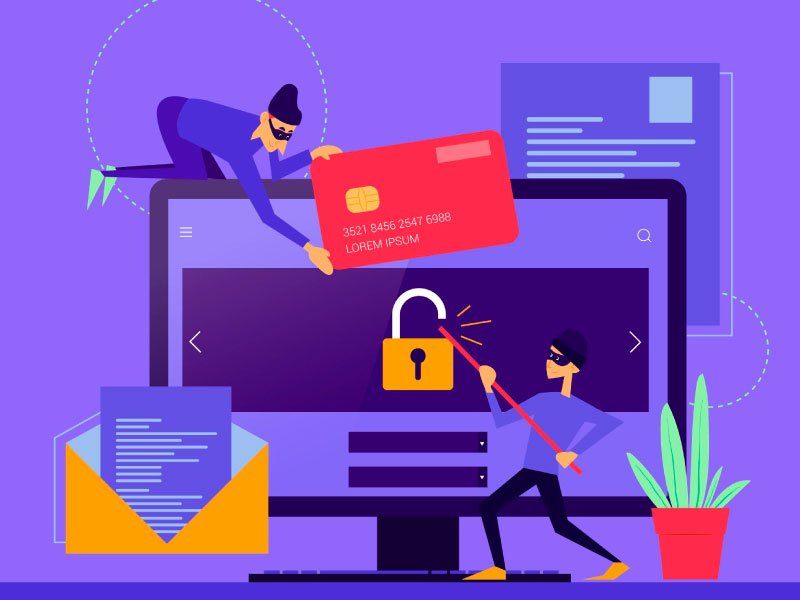What Is PCI Compliance? 12 Requirements, Pros & Cons, & More

In the ever-evolving landscape of digital transactions and online commerce, safeguarding sensitive information is paramount. One crucial aspect that businesses must navigate is Payment Card Industry Data Security Standard (PCI DSS) compliance.
PCI compliance serves as a comprehensive framework designed to ensure the secure handling of credit card information during transactions. As the digital realm expands, so does the need for stringent measures to protect against data breaches and cyber threats.
In this blog, we delve into the intricacies of PCI compliance, unraveling its significance in today’s interconnected world, and providing insights into the steps businesses can take to achieve and maintain this vital standard.
Keep reading!
Table of Contents
What is PCI Compliance?
PCI compliance is a set of rules and regulations aligned with the Payment Card Industry Data Security standards (PCI DSS) that aims to ensure that all companies that process, store, or transmit credit card data do it responsibly and without jeopardizing any clients or organization sensitive credit card data.
PCI Compliance regulation was launched on September 7, 2007, and since then it has been the go-to standard to ensure PCI security standards are being followed plus, improve account security throughout all transaction processes.
Surprisingly enough, PCI compliance is managed and administered by an independent body created by world-class payment processing corporations such as Visa, Mastercard, Discover, JCB, American Express. This organization is known as the PCI security compliance council (PCI SCC).
Understanding The Current State of PCI Compliance

Even though PCI compliance is not a regulatory mandate, the Federal Trade Commission (FTC) is responsible for the supervision of credit card processing as it falls under the need for consumer protection and oversight.
Ensuring PCI compliance is essential for all credit card company’s security measures since these measures are mandated by the PCI security compliance council.
The PCI Standards Council is the driving force behind the rules and regulations for PCI compliance, but they are not alone. The Card Association Network and the National Automated Clearing House (NACHA) are also key players, working to set standards in the credit card industry.
PCI Compliance Requirements
PCI compliance involves following a specific set of guidelines established by the PCI Standards Council. PCI DSS has a set of 12 key requirements, 78 base requirements, and more than 400 test procedures.
How to Become PCI Compliant
To meet PCI compliance guidelines while ensuring optimal security, it is crucial to follow these essential steps. Let’s dive into the 12 major practices:
Implement firewalls to protect data
Appropriate password protection (such as 2FA)
Protect cardholder data
Encryption of transmitted cardholder data
Utilize antivirus and anti-malware software
Update software and maintain security systems on a regular basis
Restrict access to cardholder data
Unique IDs assigned to those with access to data
Restrict physical access to data storage
Create and monitor access logs
Test security systems on a regular basis
Create a policy that is documented and that can be followed
Determining if your business is PCI compliant involves conducting a comprehensive security assessment annually. While the requirement for PCI compliance is consistent across the board, the specific validation necessities and assessments might vary slightly depending on the card network you are affiliated with. The type of assessment you need to undertake each year will be determined by factors such as the volume of card transactions your business processes.
The latest version of PCI DSS, known as version 4.0, was released in March 2022. These 12 steps and 6 compliance requirements ensure that companies assess their networks, systems, and processes to maintain a secure environment for handling credit card transactions.
The Benefits of PCI Compliance
Compliance with PCI SSC has numerous advantages. Let us explore some of the key benefits of achieving PCI compliance.
Secure Systems
PCI Compliance standards ensure the security of your systems, giving your customers peace of mind when it comes to their sensitive payment card details.
Improved Reputation
Achieving PCI compliance boosts your business reputation with clients, stakeholders, and payment brands. This allows your organization to have access to better and more profitable business opportunities.
Contributing to a Global Cause
By ensuring your organization is PCI compliant you actively contribute to the implementation and improvement of a global payment card and data security solution.
Increased Security
Being PCI compliant makes it easier to meet other compliance standards such as HIPAA, CMMC, and more.
The Cons of PCI Compliance

Failing to meet PCI compliance can pose a serious threat to your organization’s reputation and discredit all your hard-earned marketing and sales results in minutes. Meeting PCI regulations will not only give you the upper hand against your competitors but will also ensure that your customer’s sensitive data is safe.
Failing to meet PCI compliance requirements can result in:
Damaged Reputation
Not meeting PCI compliance requirements can harm both your reputation and your ability to effectively conduct business—both now and in the future.
Potential Data Breaches
Account data breaches can have devastating consequences. Not only can they result in significant monetary loss, but they can also harm relationships with customers and damage a company’s reputation within the community. In addition, public companies often experience a decline in their share prices following a data breach incident.
Fines, Lawsuits, and Insurance Claims
Lawsuits, insurance claims, canceled accounts, and fines can seriously hurt your business. Don’t let PCI Compliance become a burden. With the right software and services, protecting your critical information can be a manageable task. Choose a data loss prevention software that accurately classifies and utilizes your data, giving you the peace of mind that your cardholder data is secure.
PCI compliance is one of the best competitive advantages your organization can have, so don’t sleep on becoming compliant.
PCI Compliance Levels
Determining if your business is PCI compliant involves conducting a comprehensive security assessment annually. While the requirement for PCI compliance is consistent across the board, the specific validation necessities and assessments might vary slightly depending on the card network you are affiliated with.
The type of assessment you need to undertake each year will be determined by factors such as the volume of card transactions your business processes. Every business falls into one of four categories. In this example, we will use Visa compliance levels to determine where a business stands.
| PCI Compliance Levels | Who Needs to Comply? |
|---|---|
| CMMC Level 1 | Organizations that process 6 million or more Visa transactions per year. |
| CMMC Level 2 | Organizations that process between 1 million and 6 million transactions per year. |
| CMMC Level 3 | Organizations that process between 20,000 to 1 million visa transactions per year. |
| CMMC Level 4 | Organizations that process less than 20,000 transactions or up to 1,0000 transactions per year. |
Some small businesses are allowed to perform self-assessments depending on their payment setup. Bigger organizations are required to hire a third-assessment party to investigate.
The PCI Security Standard Council provides self-assessment questionnaires to help organizations identify what PCI compliance levels they need to achieve.
Groups Involved in PCI Compliance

PCI compliance involves four layers of groups, starting with the card networks that established it and extending to the individual businesses that process customer payments.
Card Networks
Major card networks, such as Visa and Mastercard, have their own distinct set of requirements. Even though each card network has slightly different requirements, they all follow the standards set by the PCI Security Standards Council.
The PCI Security Standards Council
The PCI Security Standards Council was founded by top card networks such as Visa, Mastercard, and JCB International. This council oversees creating, supervising, updating, and ensuring today’s payment card security standards are being followed.
Vendor Account Providers or Payment Service Providers
Payment service providers will not only help you follow the rules set by card providers, but they also take on the role of PCI compliance administrators for your business. They include specific PCI compliance requirements in their contracts or agreements, making it easier for you to stay compliant.
Business Owners
To keep your merchant account, it is crucial for your business to meet the requirements set by the account provider. These requirements ensure that your business complies. Failure to meet PCI compliance standards could result in costly fees or even the loss of your merchant account.
How Much Does PCI Compliance Costs?

Certain payment processors charge PCI compliance fees. In exchange, you’ll receive valuable compliance-related services. These services can include access to consultants who will assist you in completing all the necessary requirements. For example:
Pay Simple charges a monthly fee of 5.95. In exchange, your organization will have access to their “PCI Compliance Tool.” Non-compliant organizations must pay a monthly fee of $5.95 USD.
Other popular companies such as Stripe, don’t have specific charges for PCI compliance.
Other companies don’t have any specific information on PCI compliance in their guidelines. Most of the time, those companies charge vague “services fees” that may or may not be related to PCI compliance.
Keep in mind the cost of any fees and the services you will receive when choosing a payment processor. Even if your payment partner does not charge a fee, you’ll likely have to invest in PCI compliance. For level 4 merchants, this can mean paying anywhere from $300 to $1,000 or more annually to hire an approved scanning vendor who will evaluate your network, fill out the questionnaire, and assist with resolving any issues.
PCI Compliance Checklist
The following PCI compliance checklist will provide an overview of what you need to become PCI compliant.
Understand Your Business Future and Current Needs
Conduct an assessment to discover your organization’s unique needs.
Find out the compliance level your business needs and its requirements
Talk to your payment processor to:
Uncover the specific PCI compliance requirements needed in your contract
Discover if your contract has specific recommendations for your business to follow.
Find out if you are paying any PCI compliance fee
Discover if your payment card processor offers any compliance services or recommendations of which you are not aware.
Talk to a PCI Compliance Expert
Contacting compliance experts such as BTI will allow you to enhance your compliance needs within your industry without worrying about the design, implementation, and maintenance of your specific strategies and solutions for affordable prices.
By simply following this handy PCI compliance checklist, you’ll be well on your way to meeting all the necessary requirements.
Tips to Achieve PCI Compliance
Data security can be a complex topic, especially for small-business owners who must tackle the assessment questionnaire. Here are some steps that can make this entire process a lot easier for you.
Step 1: Follow Data Hygiene Best Practices
Following data hygiene best practices will make passing your PCI compliance assessment easier. Make sure you:
- Use strong passwords.
Keep your hardware and software updated to avoid vulnerabilities. - Use data deduplication and data security best practices to eliminate duplicate data and store critical data safely.
- Make sure your staff is trained to avoid phishing, SMShing, and other common scams and ensure cybersecurity best practices are being followed.
- Use card readers and payment software that are validated by the PCI Security Standards Council.
- Train your employees on the importance of cybersecurity and protecting cardholder data.
Step 2: Take Paperwork Seriously
Self-assessment questionnaires can be a source of frustration for business owners. It is common for people to quickly check yes to all the questions without really thinking about their answers. This is a risky approach, as penalties can be more severe if a compromise occurs. If you are unsure about how to effectively manage these questionnaires, it is wise to reach out to your payment processor for clarification or seek assistance from an expert.
Use the Right Systems to Make PCI Compliance Easier
When it comes to Payment Card Industry (PCI) compliance, your choice of point-of-sale (POS) system can make all the difference. Opting for a modern cloud-based POS that seamlessly integrates payment processing, POS capabilities, and card readers can significantly reduce security risks. These comprehensive systems are not only secure and require minimal maintenance, but they also usually come with PCI compliance support.
While some business owners resort to cobbling together various products and services from different providers, this approach can leave you vulnerable and reliant on your own efforts to stay up to date.

Key Takeaways
- Companies that comply with the Payment Card Industry Data Security Standards (PCI DSS) are considered PCI compliant. The PCI Security Standards Council oversees and creates these standards.
- To achieve PCI compliance, organizations need to meet 12 key requirements, along with 78 base requirements, and undergo 400 test procedures. This helps ensure that their data is secure and that they protect the information of cardholders.
- Being PCI compliant has some amazing benefits like reducing the risk of data breaches, keeping cardholder data safe, avoiding fines, and even boosting your brand reputation.
- While PCI compliance is not a legal requirement, it is highly recommended based on court rulings. So why not take the necessary steps to protect your business and gain that peace of mind?
Looking for a PCI Compliance Service Provider?
Here at BTI, we have more than 35+ years of helping small businesses and enterprise-level organizations achieve PCI compliance without breaking the bank! Choose BTI as your PCI compliance service provider and let us take care of all your compliance needs!
Ready to take your business security to the next level? Contact us today and start your PCI compliance journey!






